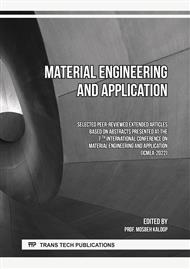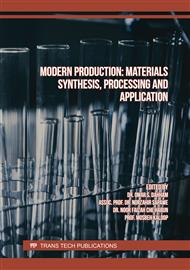p.193
p.203
p.211
p.219
p.229
p.237
p.243
p.251
p.257
Effect of Alum Sludge (AS) and Palm Kernel Ash (PKA) with Coconut Shell as Partial Replacement of Aggregates
Abstract:
At present, there is a high demand for concretes with varying properties. Generally, concrete with high durability can be produced by considering the constituents of the concrete, such as cement, sand, aggregates, and water. The quality of concrete is also dependent on the mix design and production method, such as transporting and pouring of concrete. In recent years, the developed countries have been focusing on the issue of sustainability in construction to create a healthier environment and reduce the environmental impact of a building throughout its lifetime while optimizing its economic viability and ensuring the comfort and safety of the occupants. One way to achieve sustainability is using agricultural waste material such as palm oil fuel ash, rice husk, fly ash slag, sludge, and coconut shell in concrete production. This study performs a series of tests to investigate the effect of using alum sludge (AS) and palm kernel ash (PKA) with coconut shells as a partial replacement of aggregates. The concrete samples were subjected to compressive strength, flexural strength, rebound hammer, ultrasonic pulse velocity, water permeability, water absorption, carbonation, alkali-silica reaction, SEM, and shrinkage tests.
Info:
Periodical:
Pages:
251-256
Citation:
Online since:
December 2022
Keywords:
Price:
Сopyright:
© 2022 Trans Tech Publications Ltd. All Rights Reserved
Share:
Citation:



